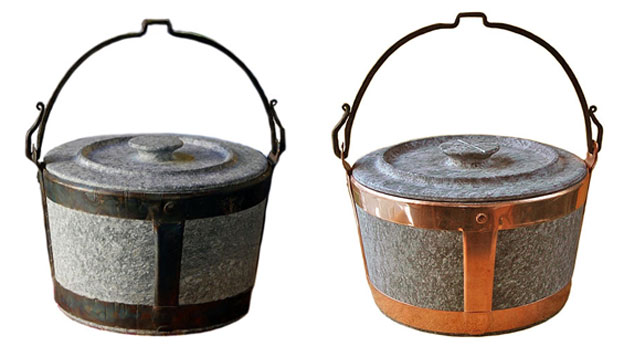IN THE PAST
In ancient times, cooking utensils were not made of metal, but of clay or soapstone. The first metal used for this purpose was bronze, probably followed by iron in the Middle Ages, both molded by casting. It wasn’t difficult to add handles to clay pots, but it wasn’t so easy with soapstone. It was only in the Middle Ages that Italian artisans from the Valtellina and Valchiavenna regions began to hoop their “laveggi” with wrought iron frames. Copper pans were introduced during the Renaissance and were widely used until the 19th century. It’s probably since then that craftsmen began to replace the iron frames with copper ones, which were more easily wrought.


In the colonial era, the art of soapstone carving finally reached Brazil, to the region of Minas Gerais, which means “general mines” in Portuguese. Here, over the centuries, the workshops of master craftsmen and sculptors multiplied, and soapstone cookware became an integral part of the local culture. It was only in the last fifty years, however, that the artisans developed methods for attaching handles to the stone. In the beginning, they used an iron wire wrapped around the pot to fasten wooden chunks that served as handles. Today, the most common system is to hammer a copper hoop, with copper tube handles riveted to it, into grooves cut along the upper rim of the pot.

